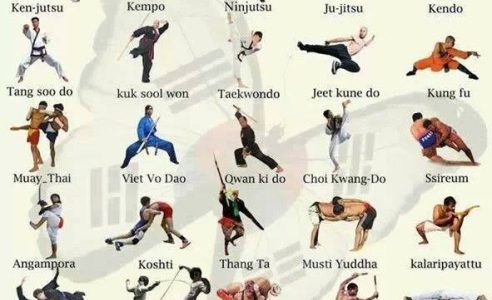What Are The Key Contrasts In Between The Technique Emphasized In Conventional Martial Arts And The Competition Emphasis Of Modern Battle Sporting Activities? Find Out How These Differences Can Influence Your Trip
What Are The Key Contrasts In Between The Technique Emphasized In Conventional Martial Arts And The Competition Emphasis Of Modern Battle Sporting Activities? Find Out How These Differences Can Influence Your Trip
Blog Article
Content Writer-McGinnis Snedker
When you think about martial arts, do you lean more toward the typical techniques or the modern combat sports? Each course offers distinct benefits and experiences, formed by their philosophies and training techniques. Standard martial arts emphasize individual development and self-control, while modern battle sports concentrate on competition and efficiency. Recognizing these distinctions can assist you in picking the best strategy for your journey. But how do these differences materialize in training and viewpoint?
The Philosophy and Background Behind Conventional Martial arts
While lots of people link martial arts with physical battle, the philosophy and background behind conventional martial arts run much deeper. You'll discover that these techniques stress individual growth, discipline, and regard.
Originating from ancient practices, traditional martial arts were typically established for Self-Defense and spiritual growth. They personify principles such as balance, consistency, and self-constraint, guiding practitioners past mere fighting skills.
As you educate, you'll not only learn techniques yet likewise gain understandings into the culture and worths that formed these arts. The routines and practices, frequently passed down through generations, promote a sense of area and belonging.
The Competitive Nature of Modern Combat Sports
Modern fight sporting activities have transformed the landscape of martial arts right into a very affordable arena, where athletes challenge in a test of ability, technique, and endurance.
You'll notice that competitions are commonly arranged with strict regulations and laws, guaranteeing fair game and safety. These events attract huge audiences, fueling the enjoyment and strength of matches.
Professional athletes train rigorously, not just for physical expertise yet also for mental sturdiness, recognizing that every information counts in the ring. The adrenaline rush during competitors is apparent, as fighters push their limitations to claim victory.
Fans appreciate the athleticism and virtuosity entailed, making modern-day fight sports a thrilling phenomenon that continues to develop and astound enthusiasts all over the world.
Training Approaches and Methods: A Relative Evaluation
The affordable atmosphere of modern-day fight sports demands cutting-edge training approaches that vary dramatically from conventional martial arts.
In contemporary training, you'll concentrate on certain strategies, sparring, and conditioning, commonly making use of drills that simulate real fight circumstances. You'll see a focus on measurable performance and frequent competitors to assess your abilities.
On the other hand, standard martial arts prioritize kinds, katas, and thoughtful teachings, often emphasizing technique and respect over competitors.
Recommended Website is normally much less extreme and may include repetitive practice rather than real-time sparring.
While both approaches develop skill and fitness, modern-day battle sports give a more dynamic and versatile training setting, preparing you for immediate obstacles in the ring or cage.
Select the path that aligns with your goals and passions.
Verdict
In selecting between standard martial arts and modern fight sports, it truly comes down to what you value a lot of. If you're looking for personal growth, self-control, and a feeling of community, conventional arts could be your best fit. Yet if you grow on competition and real-time obstacles, modern battle sports could be the way to go. Ultimately, mouse click the following post supply unique benefits, so it's everything about straightening your training with your individual objectives and rate of interests.
